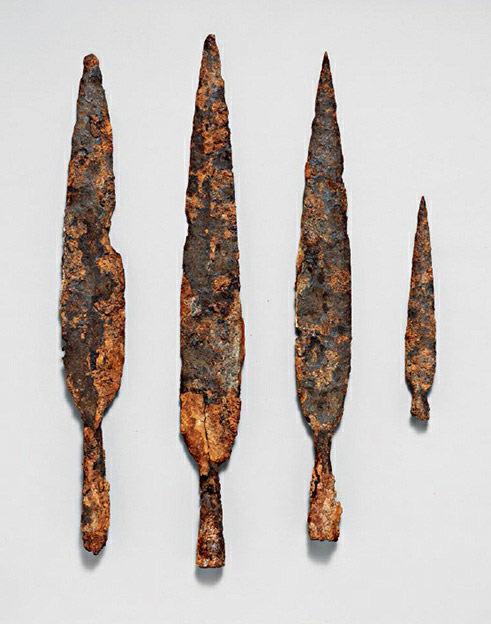The Iron Age, as the latest of the three prehistoric periods defined by significant technological developments, heralds a pivotal shift from bronze to iron as the material of choice for tools and weapons. This era is distinguished by the mastery of ironworking, particularly in the production of carbon steel, a process that demanded intricate knowledge and high-temperature smelting techniques.
Iron smelting required combining iron ore with charcoal in high-temperature furnaces, where the carbon from charcoal aided in reducing iron oxides to a malleable mixture of minerals and metallic iron. This process resulted in wrought iron, which could be refined to remove impurities. Ancient ironworkers discovered that reheating this iron in charcoal beds, followed by rapid cooling, produced steel – a substance far superior in hardness and durability to bronze.
The initial proliferation of mass-produced steel tools and weapons traces back to around 1200 BCE in the ancient Near East, encompassing regions like Mesopotamia, Egypt, and Iran. This innovative technology gradually spread to the Mediterranean, Asia, and Europe, with northern Europe embracing steel production around 500 BCE, signaling the culmination of the Iron Age.
This era’s end dovetails with the onset of reliable historical records, underscoring the profound impact of ironworking on the development of human civilizations. The advancements in steel alloys since the Industrial Revolution, which have led to the construction of modern skyscrapers and bridges, highlight the enduring legacy of the Iron Age and its foundational role in shaping contemporary metallurgical practices.

